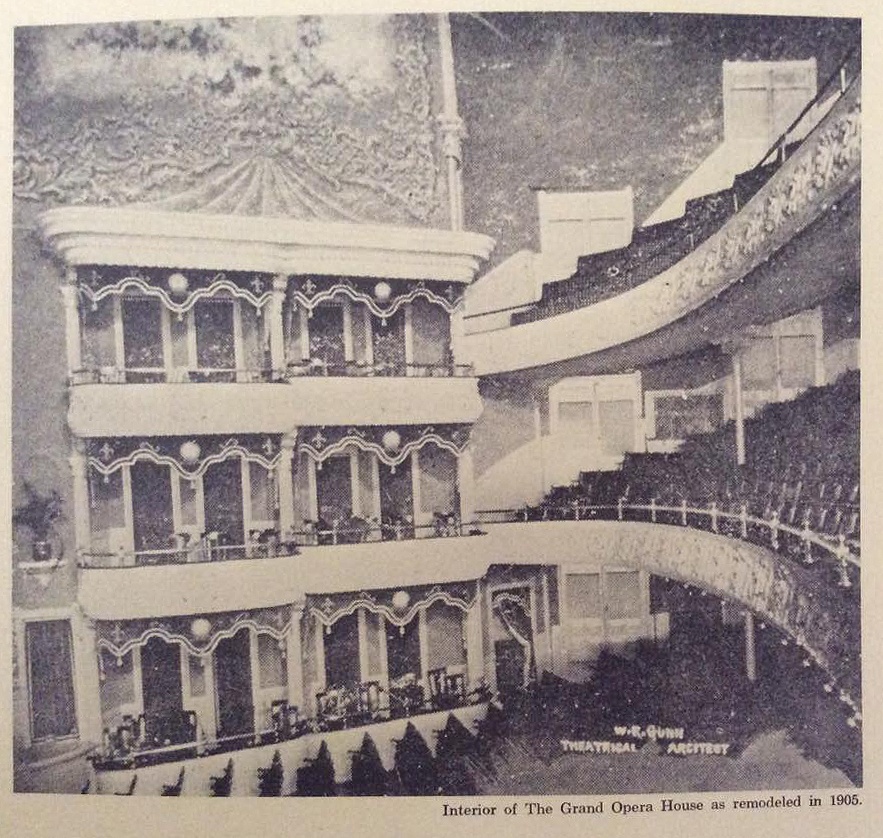And so the greatly expanded footprint of the 1904 Grand Opera House was constructed for the next generation of theatre patrons, with a modern lobby, rest rooms, and some approximation of climate control. The new theater had a total seating capacity of 2,400, and the stage was 80 feet wide and 60 feet deep, the largest in the South and one of the largest in the country at the time.
The project was guided by architect W. R. Gunn, who built more than 100 other theatres in the United States, and who boldly stated “I am the only theatrical architect and practical builder in the U. S. of A. who will guarantee the line of sight and acoustics when the entire control of the auditorium and stage is under my supervision, and will forfeit $1,000 when my construction proves a failure in either case.” According to legend, Mr. Gunn always kept his money. It’s an important declaration, because the stage had always been a distinguishing point of pride for the Academy of Music, and now The Grand Opera House, as each was built specifically for the male human voice to use the entire audience chamber as a resonator and amplifier. The Grand was, and is still, a treasured acoustic space.
And the stage itself was immediately the stuff of legend, starting with a stage production of “Ben Hur” that became one of the new venue’s opening shows. As if to emphasize the difference between 1884 and 1905, the spectacle of “Ben Hur” required a stage capable of handling treadmills for a live chariot race – with horses! – as well as other unique alterations, so much so that the New York production sent an advance team to Macon to observe the stage’s construction and ensure it could fulfill those needs.

